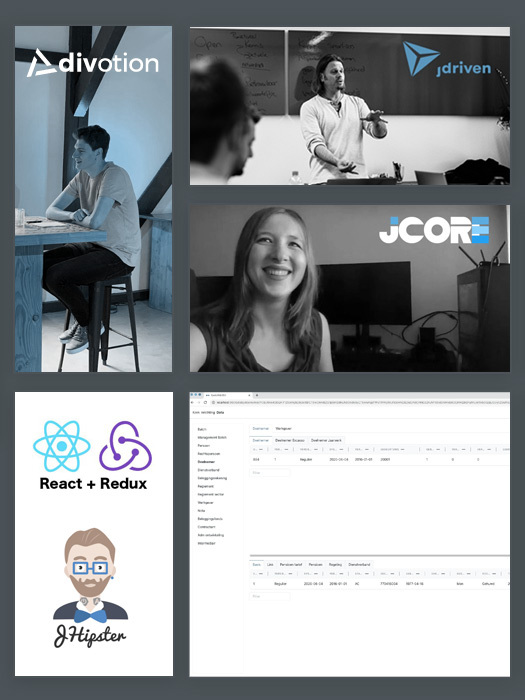Building AI-Friendly Apps: Configuration-Driven Architecture
How moving business logic to config files makes your applications 10x easier for AI to understand and modify
The Problem Every Developer Faces
You've built a solid application. The code is clean, the tests pass, and everything works perfectly. Then business requirements change. Again.
What should be a simple rule adjustment like "Apply a 15% discount instead of 10% for premium customers" ends up requiring diving into multiple files, understanding complex conditionals, running tests, and deploying code changes.
Now imagine an AI assistant that could make this change instantly by simply updating a configuration file. No code changes. No deployments. No breaking existing functionality.
This is Configuration-Driven Architecture (CDA), and it's revolutionizing how we build applications in the AI era.
What is Configuration-Driven Architecture?
Configuration-Driven Architecture moves your business logic from hardcoded implementations into structured configuration files. Instead of writing if-else statements and complex business rules directly in your code, you define them as data that your application interprets at runtime.
Think of it as the difference between:
Traditional Approach:
public double calculateDiscount(User user, Product product) {
if ("premium".equals(user.getTier()) && "electronics".equals(product.getCategory())) {
return product.getPrice() * 0.10;
}
if ("gold".equals(user.getTier()) && product.getPrice() > 100) {
return product.getPrice() * 0.05;
}
return 0;
}
Configuration-Driven Approach:
rules:
- conditions: {userTier: premium, productCategory: electronics}
discount: 10%
- conditions: {userTier: gold, priceMin: 100}
discount: 5%
Your Java code becomes a simple rule processor that reads this config and applies the logic—no hardcoded business rules.
Why AI Loves Configuration-Driven Apps
Structured Data is AI's Native Language
AI models excel at working with structured data like JSON or YAML. When your business logic lives in these formats, AI can:
- Understand the complete rule set instantly
- Modify rules without parsing your entire codebase
- Generate new configurations from natural language descriptions
- Validate changes against existing patterns
Reduced Cognitive Load
Instead of parsing thousands of lines of code to understand one business rule, AI can focus on a concise configuration block. This dramatically reduces the context needed for accurate modifications.
Safe Modifications
Configuration changes are inherently safer than code changes. Your core application logic remains untouched while business rules evolve in isolation.
Runtime Modification Power
Perhaps most exciting: AI can modify configurations while your application is running. No restarts, no deployments—just instant rule updates. This opens the door to AI-driven admin panels and intelligent systems that adapt behavior in real-time based on user feedback or performance metrics.
A Simple Example: Pricing Rules
Here's how you might structure a basic pricing system using CDA with YAML configuration:
# pricing-rules.yaml
rules:
- id: bulk-discount
conditions: {quantity_min: 10}
discount: 15%
- id: vip-discount
conditions: {user_tier: vip}
discount: 20%
- id: student-books
conditions: {user_tier: student, product_category: books}
discount: 10%
Your Java PricingEngine class simply reads this configuration and applies the rules. When business requirements change, you update the YAML file—no code changes needed.
Beyond Backend: Configuration-Driven Frontend
The power extends to your frontend too. Developers create reusable UI components, and AI assembles them through configuration:
# page-config.yaml
pages:
- id: product-listing
components:
- type: SearchBar
props: {placeholder: "Search products..."}
- type: ProductGrid
props: {columns: 3, showFilters: true}
- type: PaginationBar
- id: checkout-flow
components:
- type: AddressForm
- type: PaymentForm
props: {allowedMethods: ["card", "paypal"]}
- type: OrderSummary
Your Java page renderer reads this config and assembles the components. Developers build the building blocks; AI puts them together based on business requirements.
This approach lets developers focus on building robust, reusable components while AI handles the composition and configuration. Business users can describe their ideal interface in natural language, and AI can generate the page configuration instantly.
AI Integration Made Simple
With configuration-driven architecture, you can build AI features that modify business logic through natural language:
public String generateRule(String requirement) {
String prompt = String.format("""
Convert this to YAML pricing rule: "%s"
Format: - conditions: {field: value}
discount: XX%%
""", requirement);
return aiClient.complete(prompt);
}
Tell AI "Give 25% off to students buying textbooks over $50" and it generates the YAML configuration instantly. No Java code changes needed.
Key Benefits You'll See Immediately
For Developers:
- Faster feature development and testing
- Reduced deployment frequency for business logic changes
- Easier debugging and troubleshooting
- Better separation of concerns
For Business Teams:
- Ability to experiment with rules without developer involvement
- Faster time-to-market for business logic changes
- Better visibility into application behavior
For AI Integration:
- Simplified modification and generation of business rules
- Better understanding of application behavior
- Safer automated changes
- Real-time rule editing through AI-driven admin interfaces
- Intelligent adaptation based on user behavior and performance data
- Full-stack configuration: AI can modify both backend logic and frontend layouts from a single conversation
When to Use Configuration-Driven Architecture
CDA works best for applications with:
- Frequent business rule changes (pricing, permissions, workflows)
- Complex conditional logic that varies by context
- Multi-tenant requirements where different customers need different rules
- Dynamic UI requirements where different users need different interfaces
- A/B testing needs where you want to experiment with different behaviors
- Regulatory compliance requirements that change frequently
Getting Started: Your Action Plan
- Identify Configuration Candidates
- Look for hardcoded business rules in your current codebase
- Find areas with frequent requirement changes
- Spot complex conditional logic that could be simplified
- Start Small
- Pick one specific domain (pricing, permissions, workflows, or UI layouts)
- Create a simple JSON/YAML schema for your rules or components
- Build a basic rule engine or component renderer
- Add Type Safety
- Define TypeScript interfaces for your configuration
- Use validation libraries like Zod for runtime checking
- Create proper error handling for invalid configs
- Integrate AI Gradually
- Start with AI-generated configurations from natural language
- Add configuration optimization and suggestion features
- Build AI-driven admin panels that let business users modify rules through chat interfaces
- Create intelligent UI builders where AI can assemble interfaces from component descriptions
- Create intelligent systems that automatically adjust rules based on performance metrics
The Future is Configuration-Driven
As AI becomes more integrated into development workflows, applications that can be understood and modified through configuration will have a massive advantage. They'll be more maintainable, more flexible, and infinitely more AI-friendly.
The question isn't whether you should adopt Configuration-Driven Architectur. It's how quickly you can start implementing it in your next project.
What business logic in your current project could benefit from being configuration-driven? Share your thoughts and let's discuss how to make your applications more AI-friendly.



 Frameworks at Crossroads Europalaan 93, 3526 KP Utrecht
Frameworks at Crossroads Europalaan 93, 3526 KP Utrecht